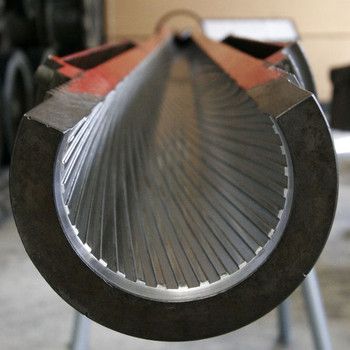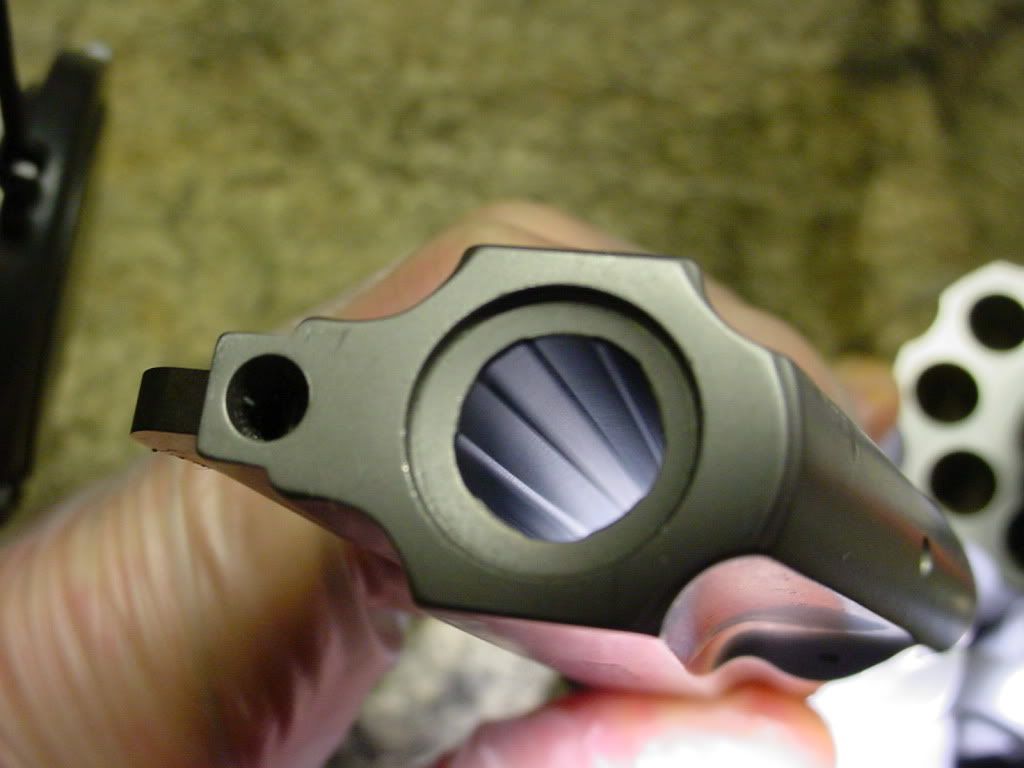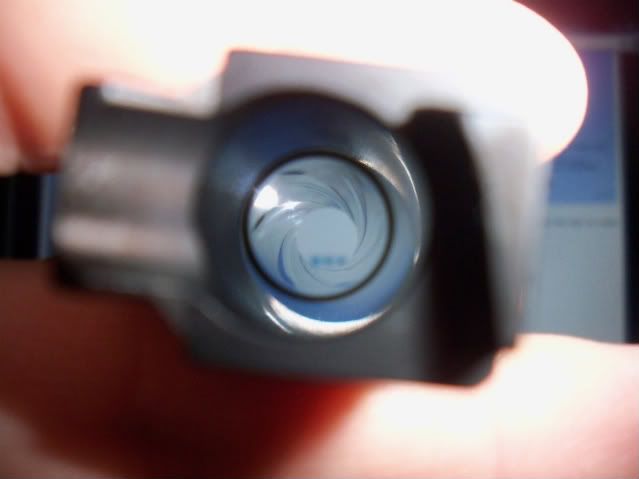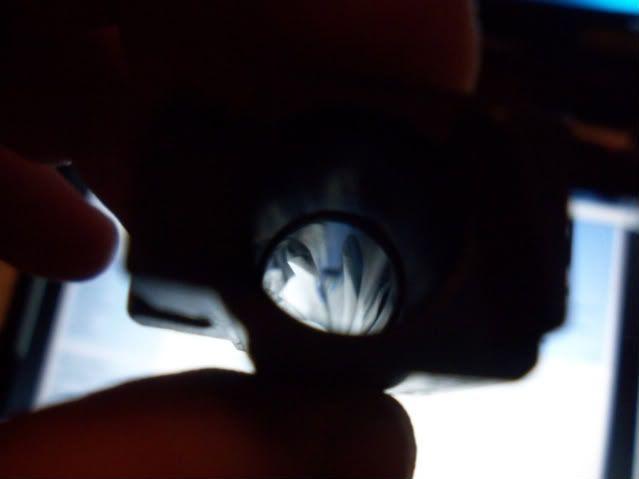OP here: Ladies and gentlemen, I think I have a winner, and for those of you interested in a gun that can best fulfill the role I mentioned, I will tell you why.
The best thing I can find is the Ruger SP101 Model 5720.
When I say best, that is just the gun that meets "my" desired requirements best. "Your" best gun might be considerably different depending on what you want it to be able to do, but if you are interested in my mode of thought, here are my findings. Remember: want to minimize a black powder gun / cartridge ammo option for optimum conceal and carry while retaining enough energy for self defense considering pure lead ammo.
This is for maximum do-it-yourself-ness as well as cheap shooting, and reliability of getting ammo (since you can make most of it yourself) in today's ammo scarce environment. Will the shortage pass? Of course it will. It is already blowing over if you watched the news on it, but we should not miss the lesson this teaches us. What if there is an ammo shortage like there is today (April 2013)?
I had to do way more homework on this to get a solid answer than I really wanted to. Went through at least 90% of every "A" list gun manufacturer in existence. Considered all options. Left no stone unturned. Considered "B" list manufacturers? No. Why would you? This is your life we are talking about. Going to risk your life to save $150 for a $500 gun instead of a $650 gun? Not me.
Why the Ruger SP101 (model 5720) wins:
It is not the perfect gun, but since optimizing specs is a matter of compromise, I think this one does it best.
1) Stainless steel construction does not make it immune to corrosion, but more resistant since black powder is somewhat corrosive. Downside: A bit heavier.
2) Concealable: Weighs 25 oz. (unloaded) Max length 7.2" Max width 1.35"
Not the smallest or lightest thing, but pretty small and light considering .357 magnum. Certainly quite concealable with a good deal of comfort relative to other CCW guns. The weight also helps with recoil. A featherweight .357 mag hurts to shoot after a while. Yeah yeah, I am a wimp,and so fourth.
3) Revolver: Not that one would always do this, but if one wanted to flex their do-it-yourself muscle, black powder, pure lead, and reloading, reusing brass, and perhaps even making your own primers can lead to the gun going "click" rather than "bang." If a person has an autoloader and it goes "click," they are probably done for. They probably don't have time to get that dud ejected fast enough. A revolver can cycle to the next round even if one doesn't fire.
4) Quality: As with any "A" list manufacturer, we can expect the gun to perform the way the manufacturer claims. Have faith that Ruger isn't going to sell you a bad gun. It is over-engineered, and built like a tank, so will probably take more than some fool like me loading up cartridges with black powder to blow it up, which is, actually from what I hear, something some people do fairly regularly already.
5) Smooth: Sure sure, adjustable sights are nice, but you don't want them to get caught on something while you try to draw your gun. Seconds count! Same goes for the hammer. That is why I also like the version of the Ruger SP101 that has no hammer to cock back.
6) History suggests this is ok to do: The .38 was determined to be insufficient, and gave rise to the .38 special, which was originally a black powder round. The reason it is longer is because it needed the extra room for the amount of BP needed to project the round at the right speed since BP is less potent than modern smokeless powder. The .357 is the same exact projectile as the .38 special. Only difference is the length of the cartridge to allow even more powder.
Today, .38 special and .357 rounds are usually quite empty if you consider the cartridge's max capacity vs how many grains of smokeless powder are actually in them. There should be no reason why we can't simply go back to their original intended purpose.
As a side note, the piece of metal flung out the front of the gun in the 9mm is almost exactly the same size as the .38 special to within 2 one-thousandths of an inch (.357 vs .355 for the 9mm).
7) Power: Black powder is less powerful than modern smokeless powder. A .357 loaded up with smokeless powder fires like you might expect a .357 mag to fire, which is very hard. As soon as you load it up with black powder however, after looking at black powder ballistics comparing BP to modern, it loses a lot of it's velocity, and thus energy. It can take 2-5 times more BP to equal a load of modern powder. The .357 cartridge has the extra room needed for extra BP. I estimate I can at least get modern .38 special energy out of it, which is certainly the floor of acceptable personal defense firepower I am willing to accept, but I am willing to accept it.
The trick here is that if you insist on being able to step down to BP in a pinch, you also step down the velocity. In order to compensate, you have to step up the caliber, or BP load. In other words if you can't throw a little rock fast enough, throw a big rock slower, or just use more black powder. (Have to have a cartridge that can hold more though, thus the longer .357 mag)
That being said why not step up to a .44 magnum or a .45 long colt pistol? Because remember we are tying to minimize the size of the gun for max conceal. Go ahead and conceal that Taurus Judge if you can. I can't. Plus, be realistic. Are you REALLY going to CCW that .44 mag EVERY DAY and still be doing it after 9 months? Could you go even smaller than .357? Sure, but considering BP, maybe not without reducing energy to less than that of a .38 special. That would be unacceptable to me.
Be careful though! In some BP ballistics tests the BP was just as powerful as modern powder. It really depends on the quality of your BP! Start small and run tests.
8) Rifling: Why am I not talking about Smith and Wesson guns?! They have several guns that are basically the exact same thing right? Well, a very good reason actually: In 1993-1996 S&W decided it would be a good idea to move to a new type of rifling: ECM rifling.
ECM (Electro Chemical Machining) rifling is NOT the same as conventional rifling, which is also not the same as polygonal rifling.
Old fashioned Conventional Rifling:

ECM Rifling:

Polygonal Rifling:



What is best? Well it depends.
Polygonal Rifling:
This is where the rifling in the barrel results in more of a "rolling hill" effect than sharp 90 degree grooves like in conventional rifling.
Just as an example, Glock uses polygonal rifling. It gives a closer hug to the ammunition as it leaves the barrel reducing the amount of pressurized gasses that can escape around the round. This results in higher velocities, which results in more energy being delivered on impact. (The gun's polygonal rifling makes it hit harder.) Certainly worth considering, but what is the downside?
If you fire pure (non hardened) soft lead through it, the closer hug, causes the particles of lead that come off the main mass to smear against the side of the barrel causing streaks and fouling. Since the barrel is now slightly more constricted, the next shot makes it even worse, exaggerating the effect each time till your rifling is pretty much worthless and full of lead after sometimes as little as 20-30 shots. It is considerably more of a pain to clean afterward too.
It can still be done, and people do it. I am not going to try to tell a guy who reloads soft lead that 8,000 rounds later, it won't work in his Glock. I should caution against alternating between jacketed ammo and pure soft lead though. If you start firing with pure lead, don't go back to hard jacket rounds till you do some serious cleaning. The hard cases won't compress as easy. Apparently, in extreme cases, it can cause the ammo to get stuck in the barrel. One more shot and it can cause bulging of the barrel, or blow up the gun causing damage to the user or other people nearby.
Glock's intention is that you only use hard rounds in a Glock: Jacketed hollow point, Full metal jacket, etc. Supposedly, hardened lead rounds are still ok and do not cause nearly as much fouling.
For those of you who always hated Glock for their perfection, and always wanted to know what their HORRRRRIBLE secret was. There you go. Their legendary reliability is less legendary with pure lead rounds if you cast and reload them yourself. Otherwise they are fine. Just something to consider.
ECM rifling:
This is where a chemical process is used to make the rifling. As you can see in the pictures, the rifling is somewhere in between polygonal and conventional methods. It is not as much of a "rolling hill" effect as in polygonal rifling, but it is considerably more rounded on the edges than conventional rifling.
Result? As you might expect: something in between. It doesn't foul as bad when shooting pure lead as polygonal, but it does foul. Still hard to clean.
Conventional Rifling:
90 degree grooves clearly visible. Best for shooting pure lead. The extra particles of lead don't smear as bad, and just sit in the grooves. Lower velocity causes less particles in the first place. Less smearing makes dis-lodging of the particles during cleaning considerably faster and easier.
Downside? Lower velocities equals less energy on impact. (The piece of metal flung out the front of the gun isn't going as fast, so it doesn't hit as hard.)
SO... just cause it's new doesn't necessarily make it better! I always like to see innovation, but it must be tempered with the question, "Since it has been done this other way for over 100 years, I wonder if there is a reason why that is a pretty good way of doing it?"
It seems ALL S&W pistols use ECM rifling now, which I feel has no place in a revolver. Autoloader? Sure, maybe. Wheelgun? No. When I contacted S&W to see if I could get them to make me a version with the conventional rifling, their reply was:
Dear Customer,
IM sorry that is not possible at this time
If further assistance is required please reply accordingly.
Sincerely,
XYZ Representative
Thus, S&W is OFF the list of acceptability because I can't fire lead through it without a lot of hassle.
Downsides to the Ruger SP101:
1) Only 5 shots. Width is what is going to get you though on CCW. More capacity on a revolver equals larger cylinder. Have to compromise somewhere. If you are conceal and carrying and they notice in a store that has a no-gun policy they will ask you to leave or put the gun back, so it is important that they do not notice. 5 shots of defense is better than 0. Personally, I feel that any store that has a "no gun policy" doesn't deserve your business because they don't respect the constitution and it's amendments. Obviously, know your state's CCW laws so you don't get yourself in trouble especially regarding government buildings.
Side note: If you self-defense the heck out of a knave in Walmart with no-gun policy, I suppose a good enough lawyer might be able to build an argument for suing you because you shouldn't have had the gun. I am pretty sure the judge and jury won't care though if you say, "So what you are telling me is that I should have definitely been helpless and got stabbed to death instead right?" In most other scenarios other than government locations, a "don't ask, don't tell" policy seems like an option.
2) The grip kinda sucks on the Ruger SP101, so buy a Hogue grip ($25):
http://www.hoguestore.com/index.php?...Path=27_61_398
or one with a laser on it for faster target acquisition and accuracy ($260-ish).
3) OPTIONAL: There will always be people who complain about triggers not being perfect, so you could get a trigger job if you want, but not necessary. I'm not.
Conclusion:
I guess all my homework only serves to confirm the assertion of many, which is that the Ruger SP101 model 5720 is one of the 2 best conceal and carry commercially available revolvers in the world today. The other one being the S&W 60 / 640 / 649 (Those models are the same, just hammer variations). Given the rifling option, I choose the Ruger for more reloading options over S&W's higher velocity. You might choose differently. I was certainly considering Glock's large ammo capacity, but... I want to make my own stuff. If you are willing to stick to factory ammo, your options are much wider.
I could go into cheap and reliable things you will need to make your own ammo from scratch, as well as the method for making them, such as your own primers, but this post is already very long winded. I guess I might add that in another post if someone asks me to.